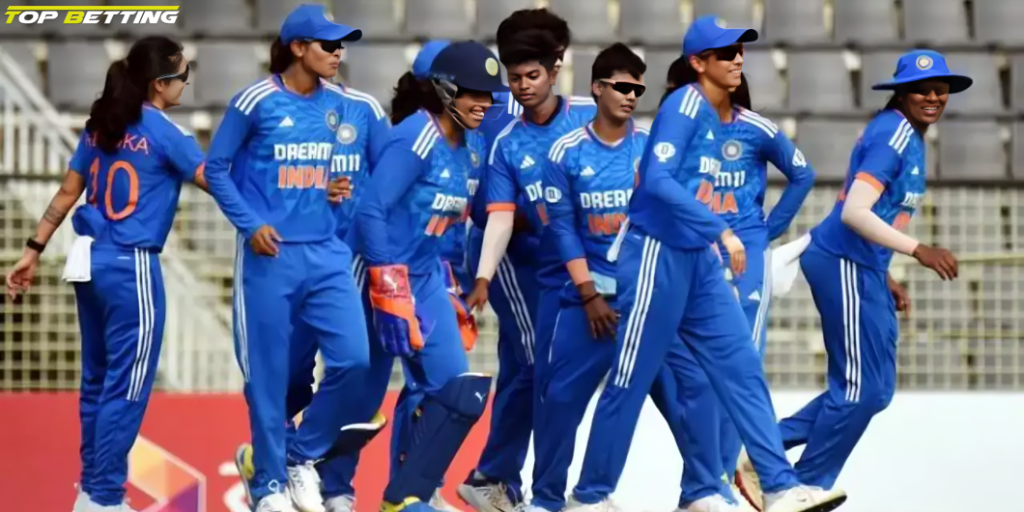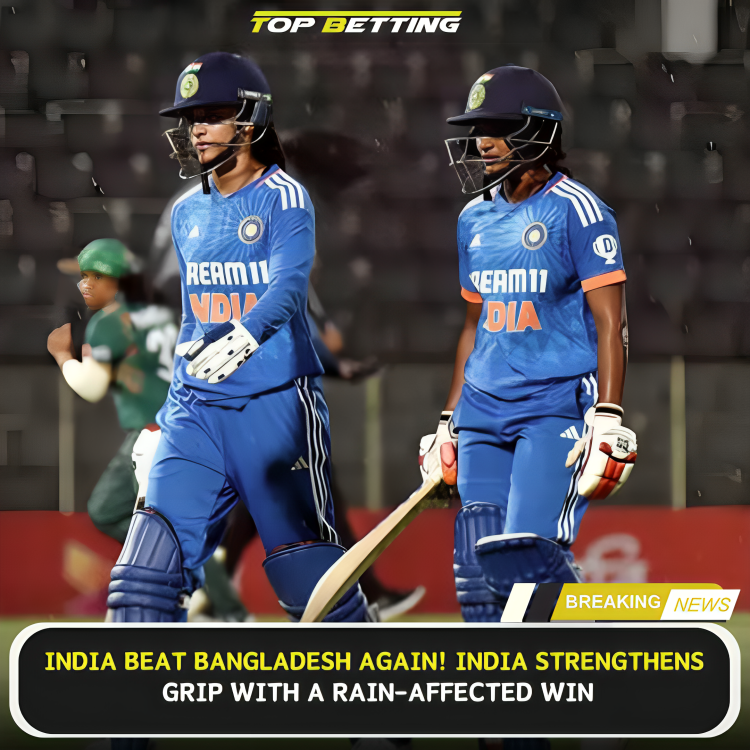
India beat Bangladesh Again
In the lush greenery of Sylhet, amidst an overcast sky, the Indian women’s cricket team showcased a blend of strategic acumen and resilience to clinch a 56-run victory over Bangladesh women in the rain-hit fourth T20I. This win not only extended their lead to 4-0 in the five-match series but also underscored their dominance in the subcontinent cricket arena.
Initial Hurdles and a Strategic Recovery
Opting to bat first on a challenging pitch, India women faced immediate setbacks. Shafali Verma, known for her explosive starts, fell early for just two runs, putting early pressure on the visitors. However, the resilience of the middle order soon came to the fore. D Hemalatha, stepping in at number three, played a brisk cameo of 22 runs off just 14 balls, which included some elegant drives over the infield. Her brief but impactful innings was curtailed by a sharp inswinger from Marufa Akther, which saw her dismissed LBW.
The real momentum shift, however, came with the partnership between Harmanpreet Kaur and Richa Ghosh. Harmanpreet, playing her 300th international game, exhibited her vast experience and class. She crafted a crucial 39 runs off 26 deliveries, maneuvering the spinners with ease and finding gaps intelligently. Her innings was marked by five well-timed boundaries, each echoing her command over the game.
Richa Ghosh complemented her captain perfectly. Her aggressive 24 off 15 balls, peppered with three boundaries and a six, injected the necessary pace into the innings, propelling India to a competitive total of 122 for 6 in the allotted 14 overs, adjusted for rain interruptions.
Spinners Turn the Game
The revised target of 125 via the DLS method posed a formidable challenge for Bangladesh under grey skies and a moisture-laden pitch. The Indian spin duo, Deepti Sharma and debutant S Asha, turned the screws on the hosts right from the start. Deepti’s precision in line and length brought about the downfall of Murshida Khatun and Dilhara Akter, setting the tone for India’s defensive strategy.
S Asha, the 33-year-old debutant, proved to be the surprise package. Her figures of 2 for 18 from three overs were not just impressive but pivotal. Asha’s googly to dismiss Nigar Sultana was a moment of brilliance, trapping the Bangladeshi captain LBW and effectively stalling the hosts’ chase. Her second wicket, the dismissal of Shorna Akter via a misjudged slog-sweep, was a testament to her ability to pressure the batters into making mistakes.
Bangladesh’s chase never really took off. After a brief initial stand, they lost wickets at regular intervals, crumbling to 68 for 7 in their 14 overs. The Indian fielders backed their bowlers superbly, effecting a critical run-out and maintaining pressure with sharp fielding.
Closing Thoughts as the Series Finale Approaches
With one game left in the series, India’s strategy will likely continue to revolve around their spinners, who have effectively stifled the Bangladeshi batters throughout the series. Bangladesh cricket women, looking to avoid a whitewash, will need to devise a robust strategy against spin and possibly reshuffle their batting order to counter India’s bowling strength.

The series, while heavily tilted in India’s favor, has provided valuable insights into the tactical nuances of T20 cricket, particularly in challenging conditions. The emergence of new talents like S Asha alongside seasoned campaigners like Harmanpreet Kaur highlights the depth of Indian cricket and bodes well for their future engagements on the international stage.
As cricket enthusiasts, especially from India, look forward to the series finale, the anticipation is not just about the result but also about witnessing the strategic interplays that define the vibrant and evolving landscape of women’s cricket.










